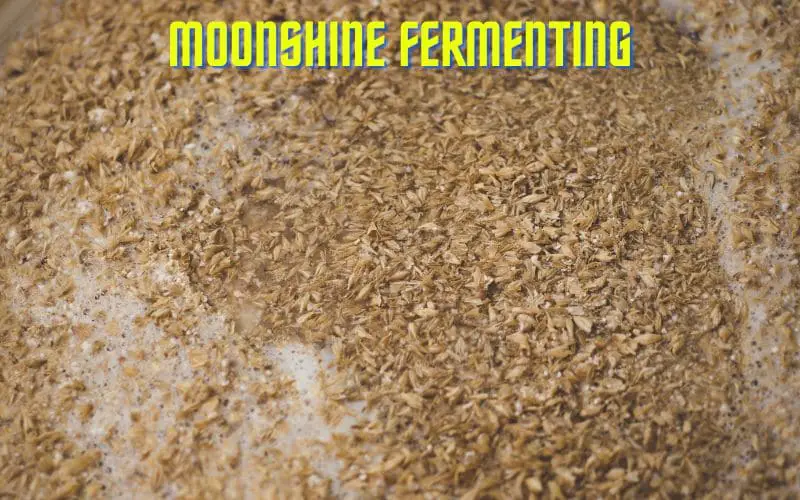Moonshine Fermenting Guide: Some Beginner's Tips and Advice!

Introduction
# Introduction Welcome to the world of moonshine fermenting! In this comprehensive guide, we will delve into the rich history, intricate processes, and cultural significance of moonshine. From understanding moonshine to exploring fermenting techniques and troubleshooting common mistakes, this article is your gateway into the mystique and charm of moonshine. So, let’s shine a light on the artistry behind distillation, explore recipes, and uncover the tales of bootleggers and innovators. Join us on this journey where every sip melds innovation and history.
What is Moonshine Fermenting?
Understanding Moonshine
Moonshine, often associated with homemade or illicitly produced spirits, holds a distinct place in the realm of distilled beverages. It is an unaged, clear spirit that typically carries the raw, potent flavors of the grain it is derived from. Moonshine’s intriguing history and cultural significance make it a captivating subject for enthusiasts and scholars alike.
The Fermenting Process
The process of moonshine fermenting involves the natural transformation of raw ingredients into alcoholic mash through the action of yeast. This crucial step sets the foundation for the distillation process, impacting the final flavor and quality of the moonshine. Understanding the intricacies of fermenting is essential for producing a high-quality moonshine.
Benefits of Moonshine Fermenting
Moonshine fermenting offers enthusiasts the opportunity to craft unique, personalized spirits with distinct flavor profiles. By controlling the fermentation process, individuals can experiment with various ingredients and techniques, resulting in a bespoke moonshine that reflects their creative vision and palate preferences.
Moonshine vs. Other Spirits
Differences in Production
Moonshine distinguishes itself from other spirits through its production methods, which often involve traditional, small-scale distillation processes. This sets it apart from commercial spirits, contributing to its unique character and artisanal appeal. Understanding these differences provides insight into the distinct nature of moonshine in the spirits landscape.
- Traditional Production Methods
- Small-Scale Distillation Processes
- Heritage and Regional Influences
Taste and Flavor Profile
The taste and flavor profile of moonshine sets it apart from established spirits, offering a raw, robust character that reflects its craftsmanship. Unlike aged spirits, moonshine embodies the essence of its raw ingredients, delivering an unadulterated sensory experience. Exploring the distinctive taste of moonshine enriches the understanding of its place in the spirits realm.
Legal Considerations
Navigating the regulatory landscape surrounding moonshine production is essential due to its historical association with illicit distillation. Understanding the legal considerations and regulations pertaining to moonshine production is crucial for enthusiasts seeking to engage in fermenting and distilling while ensuring compliance with pertinent laws and regulations.
- Licensing and Permits: Obtaining the necessary licenses and permits is a fundamental legal consideration for moonshine production. This includes understanding the specific requirements for small-scale distilleries and complying with federal, state, and local regulations.
- Regulatory Compliance: Adhering to regulatory standards such as labeling, packaging, and record-keeping is integral to legally producing moonshine. Enthusiasts must understand the guidelines for alcohol content, health and safety regulations, and taxation obligations.
- Prohibited Ingredients: Familiarizing oneself with prohibited or restricted ingredients is important to ensure compliance with laws governing moonshine production. This includes understanding the legality of additives, flavorings, and ingredients used in the fermentation and distillation process.
- Environmental Impact: Considering the environmental impact of moonshine production is essential, as regulations may govern waste disposal, water usage, and energy consumption. Enthusiasts should be aware of sustainable practices and environmental regulations pertaining to distillery operations.
Getting Started with Moonshine Fermenting
Essential Equipment
Embarking on a journey into moonshine fermenting requires essential equipment to ensure a successful and safe process. Here’s an in-depth look at the crucial tools needed:
- Fermentation Vessels: These vessels are essential for fermenting moonshine. They provide the space for the fermentation process to take place, allowing the ingredients to transform into alcohol.
- Airlocks: Airlocks are crucial in preventing oxygen and other contaminants from entering the fermentation vessel while allowing carbon dioxide to escape. This ensures that the fermentation process occurs in an anaerobic environment.
- Hydrometers: Hydrometers are used to measure the specific gravity of the liquid in the fermentation vessel. This measurement helps determine the alcohol content and allows the fermenter to monitor the progress of fermentation.
- Distillation Apparatus: Distillation is a key step in moonshine production. The distillation apparatus includes the still, condenser, and collection vessel, allowing for the separation of alcohol from the fermented liquid.
Ingredients and Recipes
The selection of ingredients and meticulous adherence to recipes are pivotal in moonshine fermenting. Utilizing grains, fruits, and sugars in precise quantities, enthusiasts can experiment with various recipes to craft moonshine with diverse flavor profiles. Understanding the intricacies of ingredients and recipes provides a foundation for successful fermenting endeavors.
The Fermentation Process
The fermentation process is a crucial stage in moonshine production, where yeast transforms the sugars in the mash into alcohol. Managing fermentation times, temperatures, and yeast strains is essential to achieve the desired flavor and alcohol content in moonshine. Delving into the nuances of the fermentation process empowers enthusiasts to craft exceptional moonshine.
- Understanding the Role of Yeast: Different yeast strains can produce unique flavors and alcohol content. Exploring the characteristics of various yeast strains and how they affect the fermentation process can enhance the final product.
- Temperature Control: Maintaining an optimal temperature during fermentation is critical for yeast activity. Discussing the impact of temperature on the fermentation process and methods for temperature regulation.
- Fermentation Duration: Examining the effects of varying fermentation times on the flavor profile and alcohol content of moonshine. Insights into determining the ideal fermentation duration for different recipes.
- Adjuncts and Additives: Exploring the use of adjuncts and additives in the fermentation process to impart unique flavors and characteristics to moonshine. An overview of common adjuncts and their effects.
- Fermentation Vessels: Discussing the types of vessels used for fermentation and their impact on the process. Comparing the advantages of different fermentation vessels and their suitability for specific moonshine recipes.
Fermenting Techniques and Tips
Traditional vs. Modern Techniques
The evolution of fermenting techniques for moonshine encapsulates both traditional methods and modern innovations. Enthusiasts have the opportunity to explore age-old practices and contemporary advancements, blending tradition with innovation to craft moonshine that harmonizes historical authenticity with modern refinement.
- Traditional Techniques:
- Examples of traditional fermenting methods
- Historical significance of traditional moonshine production
- Modern Techniques:
- Integration of technology and innovation in modern fermenting techniques
- How modern techniques have improved efficiency and quality
Fermentation Time and Temperature
Optimizing the fermentation time and controlling temperature parameters are critical factors in moonshine fermenting. Understanding the impact of time and temperature on the fermentation process is essential for enthusiasts to achieve consistent and desirable results. Mastering these aspects empowers individuals to craft moonshine of unparalleled quality.
- Importance of fermentation time in moonshine production
- Effect of temperature on the fermentation process
- How to control and optimize fermentation time and temperature
Quality Control and Safety Measures
Implementing rigorous quality control measures and prioritizing safety during fermenting and distilling are fundamental practices for moonshine enthusiasts. This entails adherence to sanitation protocols, regular quality assessments, and safe handling of equipment and materials. Embracing quality control and safety principles ensures the production of moonshine of exceptional caliber.
Troubleshooting and Common Mistakes
Identifying Off-Flavors
The ability to identify off-flavors that may develop during fermentation is a valuable skill for moonshine fermenters. Understanding the causes and characteristics of off-flavors empowers enthusiasts to troubleshoot and rectify issues, leading to the refinement of moonshine quality. Sharpening the senses for off-flavor detection is a crucial aspect of mastering the fermenting process.
- Recognizing Common Off-Flavors
- Causes of Off-Flavors in Moonshine
- Characteristics of Different Off-Flavors
Dealing with Contamination
Contamination poses a potential threat to the quality and safety of moonshine. Enthusiasts should be equipped with the knowledge to identify and address contamination issues effectively. Implementing stringent sanitation practices and understanding contamination sources are essential for ensuring the integrity of the fermenting process and the resulting moonshine product.
Avoiding Fermentation Failures
Preventing fermentation failures is crucial for maintaining the quality and consistency of moonshine production. Enthusiasts can employ various strategies such as monitoring yeast health, maintaining optimal fermentation conditions, and adapting to unexpected challenges. Developing the acumen to anticipate and avert fermentation failures is a hallmark of seasoned moonshine fermenters.
Best Practices for Moonshine Fermenting
Storage and Aging
Storing and aging moonshine are pivotal stages that contribute to the development of its character and flavor profile. Enthusiasts can explore various aging methods, from oak barrel aging to innovative techniques, to impart unique nuances to their moonshine creations. Understanding the intricacies of storage and aging elevates the craft of moonshine fermenting.
- Factors affecting storage and aging of moonshine:
- Temperature control in the aging environment
- Choice of aging vessel – oak barrels, stainless steel, glass, etc.
- Aging duration and its impact on flavor
Blending and Flavoring
Blending and flavoring moonshine offer opportunities for enthusiasts to showcase their creativity and palate preferences. By experimenting with different flavors, infusions, and blending techniques, individuals can craft bespoke moonshine expressions that captivate the senses. Mastering the art of blending and flavoring adds depth to the world of moonshine fermenting.
Legal Considerations and Regulations
Navigating legal considerations and regulations is paramount for moonshine enthusiasts, ensuring compliance with applicable laws and standards. Familiarizing with licensing requirements, taxation obligations, and production limitations is essential, enabling enthusiasts to engage in moonshine fermenting while upholding legal and ethical standards. Upholding legal compliance is fundamental in the world of moonshine production.
Obtaining the necessary licenses is the first step for moonshine enthusiasts to legitimize their operations. Different jurisdictions have specific licensing requirements for the production and distribution of moonshine. These may include permits for distilling, selling, and transporting alcoholic beverages. Enthusiasts must meticulously study and adhere to the licensing regulations specific to their region to avoid legal repercussions.
Moonshine production is subject to taxation, and enthusiasts must understand their tax responsibilities. This includes excise taxes, income taxes, and sales taxes applicable to moonshine production and sales. Keeping accurate records of production and sales is crucial for fulfilling tax obligations and avoiding penalties. Seeking guidance from tax professionals knowledgeable in alcohol taxation can aid enthusiasts in managing their tax liabilities effectively.
Regulatory bodies impose specific production limitations and quality standards to ensure the safety and integrity of moonshine products. Enthusiasts must adhere to these standards, which may include restrictions on alcohol content, labeling requirements, and production volume limitations. Understanding and complying with these regulations is indispensable for maintaining the legality and reputation of moonshine products.
Conclusion
# Conclusion As we draw the curtains on this enlightening journey through the world of moonshine fermenting, it is evident that moonshine encompasses a rich tapestry of history, craftsmanship, and artistry. From unraveling the fermenting process to exploring the nuances of flavor, moonshine offers enthusiasts an avenue for creativity, exploration, and mastery. Embracing the best practices, understanding legal considerations, and honing the fermenting process pave the way toward crafting remarkable moonshine expressions. Let’s raise a glass to the allure and mystique of moonshine, where innovation and tradition intertwine to create spirited experiences.
